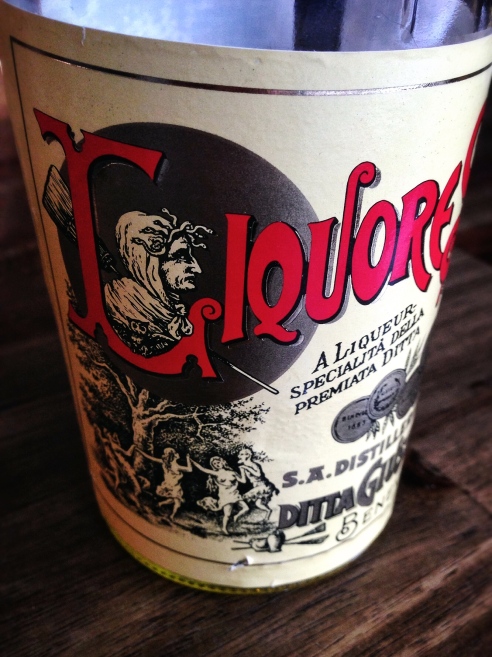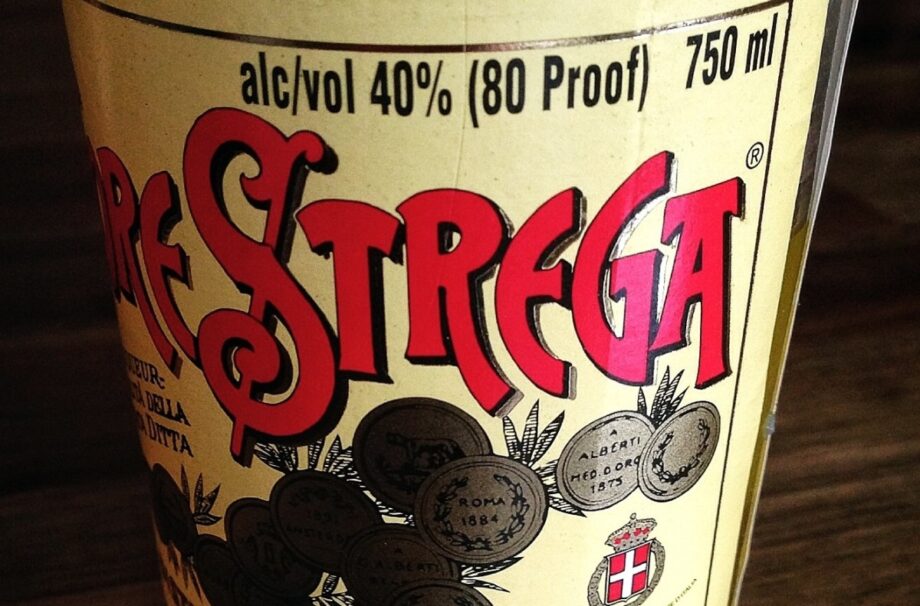Italian for “Witch,” this old school herbal liqueur has accents of saffron, mint and juniper. Looking for something herbal to add some depth to you mixes? Read on my friend.
I’ve been a big fan of Strega ever since I first tried. I’m a sucker for these types of liqueurs. Superficially it’s got a similar herbal and lightly honey tinged flavor to Yellow Chartreuse, but compared side to side, there are some definite differences.

How’s it Made?
Like most herbal liqueurs, Strega is made from a secret combination of 70 or so herbs from all pockets of the globe, that are infused into a base distillate. What combination of herbs makes Strega stand out? While some of them come from Italy, such as: Ceylon cinnamon, Florentine iris, Italian Apennine juniper, Samnite mint, perhaps the highlight (no pun intended) is its yellow color, which comes from the addition of Saffron to the infusion. Like many great liqueurs, Strega is a 100% natural product with no artificial colors or flavors. The final distillate is also aged in ash barrels before bottling.
Notes:
Mint, Fennel, saffron, honey and a slight almost inky scent on the nose. The palate has flavors of mint, anise, juniper, fennel, among other herbs as well as sugar followed by a touch of heat from the alcohol. The finish leaves a lingering honey tinged saffron and juniper flavor on your tongue. Light in body.
For fans of chartreuse:
Strega has a much lighter flavor and body then Yellow Chartreuse. Being lighter in proof it’s also less in your face with a more delicate flavor profile.
Proof:
80 Proof (40%ABV)

History:
Strega was created in 1860 by Guiseppe Alberti in Benevento Italy. Like most spirits, there are a number of stories behind its origins. A wine merchant by trade, Alberti moved to Benevento after his father, a spice merchant, was imprisoned in the area by a ruling family that disliked him (things like this flew back in the day). Benevento was a major railway at the time and Alberti began exporting local wines to France. He made enough money through this endeavor to buy a few bars in the area, one of which was in the train station.
The more common and “official” story of Strega’s creation is that after his father was released from prison, they joined forces to create the herbal liqueur. Alberti’s father’s knowledge of spices helped shape the herbal ingredients that eventually became Strega. As the story goes, Alberti began offering their creation in a lunch basket he served at the train station for travels. They called the liqueur Strega, because Benevento was known as the city of witches (more on this below). Eventually word spread about the liqueur and the rest is history.

Perhaps the most interesting story starts out with Alberti and father searching the area for herbs to make elixirs.
While on their search they stumbled upon a witch who had been trapped under a fallen tree branch. They saved the witch and as a reward were presented with the “secret” recipe for Strega. They had to promise not to tell anyone else the recipe and could only pass it on to another family member shortly before death, so that the recipe would live on.
Laugh all you want, but the mandate of the witch from this story is still followed today. Only two people know the recipe and they are the only ones allowed to prepare the herbs for Strega. In fact, they supposedly have a secret “herb room,” where all the herbs are stored in a coded set of draws. Only these two know how to decipher the code to collect the correct herbs.
A final, and less exciting, story I’ve heard is that Alberti simply received the recipe from a monastery in the area. Apparently, monks seem to make some of the best booze and then give it to people to make in secret.
Being an older italian liqueur, Strega also has some cool vintage ads from back in the day, much like Campari and Fernet.

Regardless of how it came about, I’m glad it did as Strega is another tasty herbal liqueur worth adding to your collection. Check out my Osakan Summer for a whiskey sourish drink with Strega or Amaro Digestivo for a delicious after dinner treat. Strega also makes a great substation for other herbal liqueurs, such as Chartreuse or Benedictine. Try a Last Word Variation with Strega or sub it in for Benedictine in a Vieux Carre. You get the idea.


